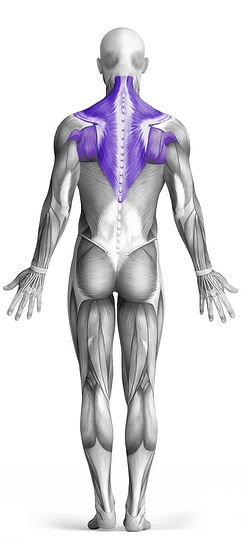Chin-Ups (Narrow Parallel Grip) 101 Video Tutorial
0

Exercise Synopsis
Target Muscle Group
Upper Back
Execution
Compound
Force Type
Pull
Required Equipment
Bodyweight
Fitness Level
Advanced
Variations
Alternatives
Timer
Hour
Minute
Second
Stopwatch
00:00:00:00
Overview
Chin-ups (narrow parallel grip) are an effective bodyweight exercise that primarily targets the upper back muscles, particularly the lats. The narrow grip also engages the biceps and forearms as secondary muscles, making it a great compound movement for building upper body strength. To perform the exercise, you grasp the bar with your palms facing each other and pull your body upward until your chin surpasses the bar, focusing on controlled movements. This exercise requires no additional equipment other than your bodyweight and is excellent for developing both strength and endurance in the upper body.
How to Perform
Begin by grasping the bar with your hands in a narrow parallel position, palms facing toward you.
Let your body hang from the bar, ensuring your arms are fully extended and your feet are off the ground.
Tighten your core muscles and initiate the movement by bending your elbows, pulling your body upwards while maintaining an upright chest and relaxed shoulders.
Keep pulling until your chin is above the bar, focusing on a controlled motion.
Hold briefly at the top, then lower yourself back to the starting position slowly, ensuring full control throughout the descent.
Repeat the movement for the desired number of reps, maintaining proper form to avoid unnecessary strain and maximize effectiveness.
★ Bonus: For exercises that involve external weights (such as dumbbells, barbells, or machines), the One Rep Max (1RM) calculator can help you estimate your maximum lifting capacity. Use it to track your strength progress and adjust your training for optimal results.
Tips
Start by positioning your hands on the bar, keeping them slightly narrower than shoulder-width to ensure a secure grip.
Engage your core and keep your body in a straight line throughout the exercise to maintain proper posture.
Begin the movement by pulling your shoulder blades down and back, using your elbows to guide the motion upward.
Focus on using your back and biceps to pull your body up, rather than relying solely on your arms to complete the movement.
As you lower yourself, control the descent by resisting any swinging or fast dropping, keeping the movement steady.
To add variety and challenge, try variations like tempo chin-ups or assisted chin-ups to help build strength progressively.
Incorporate supporting exercises such as rows, lat pull-downs, and bicep curls to strengthen the muscles used in chin-ups.
Allow adequate recovery time between chin-up sessions to give your muscles the opportunity to repair and grow.
Focus on your breathing: exhale while pulling yourself up and inhale as you lower your body back down.
Stay consistent with your training and gradually increase the number of reps or sets to continue building strength and endurance.
How Not to Perform
Avoid Using Momentum: Do not swing or jerk your body to assist the movement. Focus on smooth, controlled movements to keep the emphasis on the target muscles (upper back and biceps), preventing unnecessary energy waste.
Don't Shrug Your Shoulders: Keep your shoulders relaxed and down, away from your ears. Shrugging can lead to strain in the neck and traps, reducing the focus on the lats.
Don't Overextend Your Elbows: Avoid locking your elbows completely at the bottom of the movement. A slight bend helps maintain tension on the muscles and prevents strain on the elbow joints.
Don't Use Your Arms Alone: The movement should come from your back and biceps, not just your arms. Engage your shoulder blades by pulling them down and back before starting the pull-up to activate the right muscles.
Avoid Arching Your Back: Keep your core engaged and body straight. Arching your back can place unnecessary stress on the lower back and compromise your posture during the exercise.
Don't Rush the Descent: Lower yourself slowly and with control. Dropping too quickly can reduce muscle engagement and increase the risk of injury.
Avoid Excessive Gripping Pressure: Do not grip the bar too tightly. Over-gripping can cause tension in the forearms and hands, which takes energy away from the muscles you're targeting.
Don't Look Up: Keep your neck in a neutral position throughout the movement. Looking up can strain your neck, and it can throw off your body alignment.
Don't Allow Your Chest to Collapse: Keep your chest up as you pull yourself up. Allowing your chest to sag can reduce the effectiveness of the exercise and place more stress on your shoulders.
Avoid Neglecting Breathing: Don’t hold your breath. Exhale as you pull yourself up and inhale as you lower your body down. Proper breathing helps maintain stability and prevents muscle fatigue.
Variations
Variations of fitness exercises refer to different ways of performing a specific exercise or movement to target various muscle groups, intensities, or goals. These variations aim to challenge the body differently, prevent plateaus, and cater to individuals with varying fitness levels.
Alternatives
Alternative exercises in fitness refer to different movements or activities that target similar muscle groups or serve the same training purpose as the primary exercise. These alternative exercises can be used as substitutes when the original exercise is unavailable or challenging to perform due to various reasons such as equipment limitations, injuries, or personal preferences.








